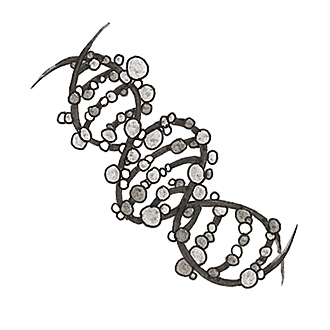
Related Questions
- Can hearts, livers, and kidneys be grown in the lab for human transplants?
- How do doctors detect cancer in the human body?
- Why do our bodies make boogers?
- How could biotechnology affect sports in the future?
- What makes nerve gas so dangerous?
- Do humans emit radiation?
- Why can’t machines — or humans — sniff out drugs or explosives as well as dogs?
- How do medicines know where in the body to start working?
- Why do we sweat more in high humidity?
- How did life on Earth begin?
Why don’t we get cancer of the hair or the fingernails?
The simple answer: they aren’t made of cells. Okay, so then why does cancer happen in other parts of our bodies…?
By Elizabeth Dougherty“Hair isn’t made of cells,” says Leona Samson, professor of biology and biological engineering and an affiliate in the Koch Institute for Integrative Cancer Research. “The stuff that makes hair” — a thready protein called keratin that also forms fingernails — “is produced by cells in the hair follicle. You have to have cells to have cancer.” Though rare, tumors do sometimes form in the cells in the hair follicle. These cancer cells have lost their ability to grow in a way that is appropriate for where they are in the body. A liver cell, for example, may become so deranged that it doesn’t act like a liver cell anymore. Then, when it divides (as cells do), it passes its derangement on, replicating its abnormalities and spreading them.
Cells store the instructions for how to function and replicate in their DNA, and cancer researchers have learned that damage to this DNA is what can cause the derangements that lead to cancer. Lucky for us, cells also have at least twenty known DNA-repair mechanisms at work correcting faulty or mixed up genetic instructions. “DNA repair is a constant activity in every cell,” says Samson.
However, since DNA-repair processes are carried out within cells, they themselves are subject to mutations or derangements — by sunlight, or toxins in the food we eat, the liquids we drink, and the air we breathe. Individuals born with defective DNA-repair systems get cancer at an early age because uncorrected genetic errors quickly accumulate into mutations that cause cancer. That is, the instructions become so muddled that the cells no longer function or replicate correctly; they become deranged, they replicate, and they spread.
To help prevent cancer and treat it more effectively, Samson studies DNA damage and repair using a wide range of perspectives. At the angstrom level, she studies the crystal structures of proteins involved in DNA repair to better understand the intricate biochemical machinery at work inside cells. At the cellular level, she studies engineered mice that lack certain DNA-repair systems. And at the level of the large populations, she compares blood samples from different people to determine what makes some people efficient at DNA repair while others remain more sensitive to environmental assaults.
Samson has learned that repair mechanisms don’t work the same way in every cell type. “Context is everything,” she says, which is critically important in cancer treatment using chemotherapy. Chemotherapy often involves chemicals that kill cells by damaging DNA. “It’s a double-edged sword,” says Samson. The trick is finding chemical agents that kill the cancer cells without damaging the healthy ones and their ability to heal themselves.
Posted: October 13, 2009